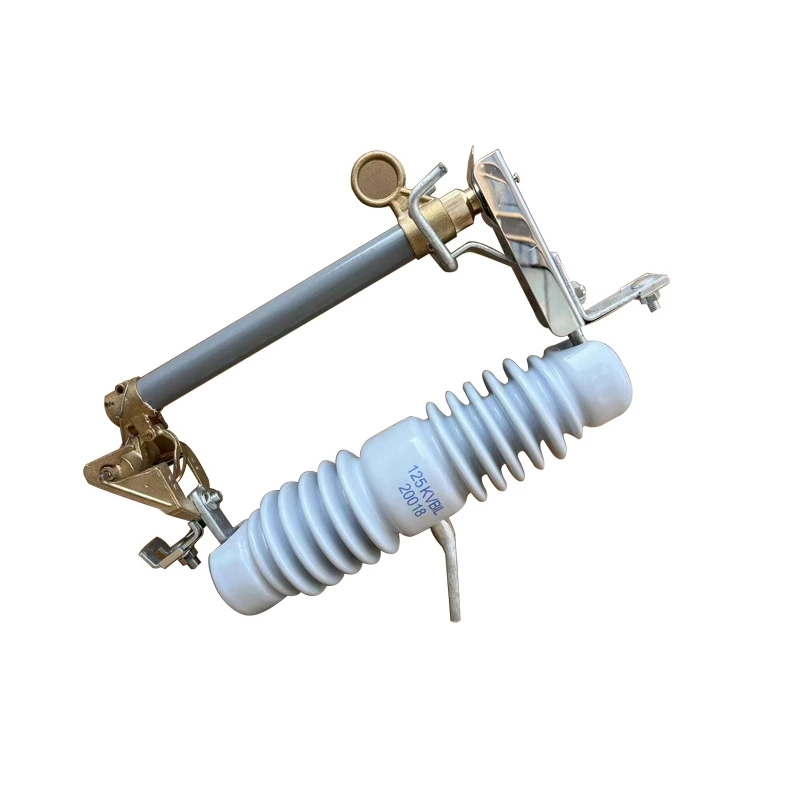Technical Countermeasures For Preventing Abnormal Shedding Of Drop-out Type Fuse
Structural reliability design
1. Dual spring redundancy: Adopting a parallel structure of main and auxiliary springs (stiffness ratio of 2:1), it ensures that more than 80% of the pre tension force can still be maintained when a single spring fails.
2. Self locking shaft: The shaft is equipped with a ratchet mechanism, which needs to be manually unlocked before operation to prevent accidental disengagement caused by wind or vibration.
Running status monitoring
1. Vibration sensor:
Install a three-axis accelerometer (range ± 50g), monitor the vibration spectrum of the melting tube, and set the alarm threshold:
Fundamental frequency amplitude>0.5mm (corresponding to looseness fault)
High frequency components (>100Hz) account for more than 10% of energy (indicating arc discharge)
2. Temperature current coupling monitoring:
Real time verification of contact point temperature rise curve through wireless temperature measurement (accuracy ± 1 ℃) and Roche coil (bandwidth 0.1Hz-1MHz).
Environmental adaptability renovation
Wind resistant reinforcement: Install a guide cover (NACA airfoil) on the melting tube to reduce the aerodynamic drag coefficient Cd from 1.2 to 0.8.
Anti icing coating: using superhydrophobic materials (contact angle>150 °), reducing ice adhesion by 70%.
4、 Fault diagnosis and emergency response
Criteria for distinguishing abnormal detachment
1. Normal operation: The angle of the molten tube falling is greater than 60 °, and uniform arc erosion marks can be seen at the fracture surface.
2. Abnormal detachment: The drop angle is less than 30 °, the contact has no melting marks, or there is mechanical impact damage on the surface of the melting tube.
On site rapid disposal process
After power failure, use an insulated operating rod to reset the melting tube and check the resistance torque of the shaft (standard value 2-5N · m).
Measure the melt resistance (normal value<1m Ω) and check the spring compression stroke (35 ± 2mm).
Perform ultrasonic cleaning on the contact (frequency 28kHz) to restore the contact surface roughness Ra<3.2 μ m.
5、 Technological Evolution Direction
Magnetic fluid damping control
Inject magnetorheological fluid (yield stress>50kPa) into the rotating shaft, adjust the damping coefficient in real time through electromagnetic field, and suppress vibration induced misoperation.
Shape memory alloy melt
The melt is made of NiTi SMA material, which triggers phase transformation shrinkage at 160 ℃ and can automatically reset after cooling, reducing the frequency of manual replacement.
Digital Twin Warning System
The multi physical field simulation model (electromagnetic thermal mechanical coupling) of fuse is established, and the risk of falling off is predicted through edge computing (accuracy>90%).
6、 Conclusion
The "falling" action of drop out fuse is not only a manifestation of protective function, but also may become a system hazard.

